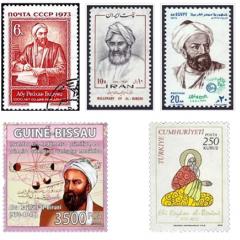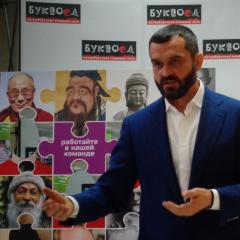Satellite map of Latvia.
Repair
Golovna
The culture of this region has preserved a lot of pagan traditions.
One of the most popular folk saints is Lego - the day of summer. Sacredly dedicated to the cult of sunshine and kindness. These days Latvians go out into nature, burn a lot, dance round dances, sing folk songs. Latvia has a lot of nature, and stinks and loves to report on its conservation: in 2012, Latvia ranked 2nd in the world (after Switzerland) in the environmental performance index . It’s cool that there are a lot of Latin nicknames that are similar to the names of trees, birds, and creatures.
The place with the largest collection of art nouveau beauvels
Riga has the largest collection of designs of the Art Nouveau (modern) architectural style in the world: over 800 BUD.
The architectural style is inspired by the 19th century and is based on the idea that mysticism may be part of it

everyday life
.
At this time, Riga experienced an economical boom, which led to great oblivion.Infection on the streets of the central part of the city is difficult not to increase respect for the booths with chimeric stucco: masks, mythical origins, Roslyn decors. The most modern place near Rizi is Alberta Street. Latvia can have a border between four powers: Estonia on the evening, Russia on the day, Belarus on the day, and Lithuania on the day.
Latvia is a great financial and logistics center, as well as an exporter of timber, petroleum products and medicines.
Latvia on the world map: geography, nature and climate

On the map of the world, Latvia is located in Eastern Europe, in the Baltic States, and is washed by the Baltic Sea at sunset, and by the Riska Backwater at sunset.
The territory of Latvia covered 250 km from day to day, and 450 km from day to day.
Sumarna dovzhina cordons – 1382 km.
Korisny Kopalini
Latvia does not have significant reserves of bark copalin, but in the region it contains gravel, clay, peat, gypsum, vapnyak, naphtha and weed.
- Relief
- Most of the topography of Latvia is represented by slightly humped plains with a height of 100 - 200 m, which is the entrance to the Similar European Plain:
- at the sunset and sunset of the region, along the shore of the Baltic Sea, the Primorskaya Lowland appears;
- the Pivdenny part of Latvia has the Zemgall lowland, Augshzem and Pivdenno-Kurzem highlands;
- The remaining part of the region is occupied by the Skhidno-Latvian lowland, the Latgal Aluksnenska and the highlands;
on the outskirts of Latvia there is the Pivnichno-Latvian lowland;
On the Russian map of Latvia, in the central part of the country you can find the Vidzemsky Highlands, the Riska Plain and the Central Latvian Lowlands.
The highest point in Latvia is Mount Gaizinkalns (312 meters), which rises to Vidzemsky High.
Hydrography
The territory of Latvia is crossed by over 700 rivers, the most recent of which is the Daugava – its length between the borders is 357 km (the final river is 1020 km).
Other great rivers – Gauja, Lielupe, Venta.
All the rivers flow to the basin of the Baltic Sea and there is a mixture of food - in the snow, on the ground and underground.
The fauna of Latvia is represented by 63 species of seabirds, 300 species of birds, 29 species of fish, 20 species of reptiles and amphibians, 17,500 species of amphibians.
The most common creatures are roe deer, deer, wild boar, hares, and wolves.
Among the rare representatives of the fauna here you can see the black lek, a raccoon dog and a dragon.
Along the Baltic Sea and in the inland waters of the region there are pike, pike perch, trout, catfish, perch, salmon, roach, salmon and other fish.
Latvia has 4 national parks, 5 nature reserves and nature reserves.

The largest environmental protection zone is the Gauja National Park, located in the central part of the region and facing us in front of the often flowing streams along the river of the same name.
- There are also historical monuments here - Turaida and Lielstraup castles, dating back to the 13th century.
- Climate
- The climate of Latvia is moderate maritime and moderate continental, which is significantly moderated by the proximity of the Baltic Sea and changes under the influx of Atlantic winds - the average climate is now 81%.
- Winter in the region is mild and snowy, the average temperature today is -1 to -5 °C.
- Summer is cold and warm, the average temperature is +16 to +18 °C.
- The average air temperature is +6 °C, and the average volume of fallfall is 600 to 700 mm.
- In the region, it is important to watch out for gloomy and gloomy weather - there are only 30 - 40 sunny days in the river.
- Map of Latvia with places.
- Administrative section of the region
The territory of Latvia consists of 110 regions and 9 republican places:
- Rigi, Daugavpils, Liepai, Yolgavi,
- Jurmali, Ventspils,
- Rezekne,– a place at the deep end of Latvia and an important port on the shores of the Baltic Sea.
Liepaya has a population of 70 thousand people.
(Republic of Latvia)
Zagalnye Vidomosti
Geographical location. Power at the last meeting of Europe. On the evening it is between Estonia, on the day – with Russia, on the day – with Belarus and Lithuania. At sunset it is washed by the Baltic Sea. Square
The territory of Latvia covers 64,500 square meters.
km.
Main places,
Administrative section
. The capital of Latvia is Riga. The largest places: Riga (924 thousand people), Daugavpils (128 thousand people), Liepaja (114 thousand people).
U administrative relations
Latvia is divided into 26 districts (districts).
State style Latvia is a republic. The head of the state is the president. The head of the order is the Prime Minister.
The legislative body is the unicameral Seimas.
Relief. Most of the territory is occupied by a low plain, with humps at the end and exit.
Geological budova and brown copalini.
Latvia is not rich in bark copalin, but in the region there are birthplaces of dolomite, vapnyak, and peat.
climate
The climate of Latvia is transitional from maritime to continental.
After the Yellow Revolution of 1917.
Latvia denied the chance to achieve sovereignty on November 19, 1918. voiced about independence.
5 serpnya 1940 r. The region was annexed to the USSR as the 15th republic.
Short economic drawing
Latvia is an industrial-agrarian country.
Conductive fields of industry - mechanical engineering and metalworking (energy engineering, electrical engineering, radio-electronic industry, fabrication of connection methods and fittings, transport and agricultural machinery). Expanded chemical and naphtochemical, light (textile, knitted, etc.), food (meat and dairy, fish, etc.), wood, wood, pulp and paper, glass and porcelain and earthenware industries; production of perfume and cosmetic products;
Artistic crafts: hide trimming, burstina, wood carving, embroidery.


